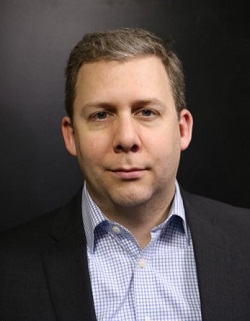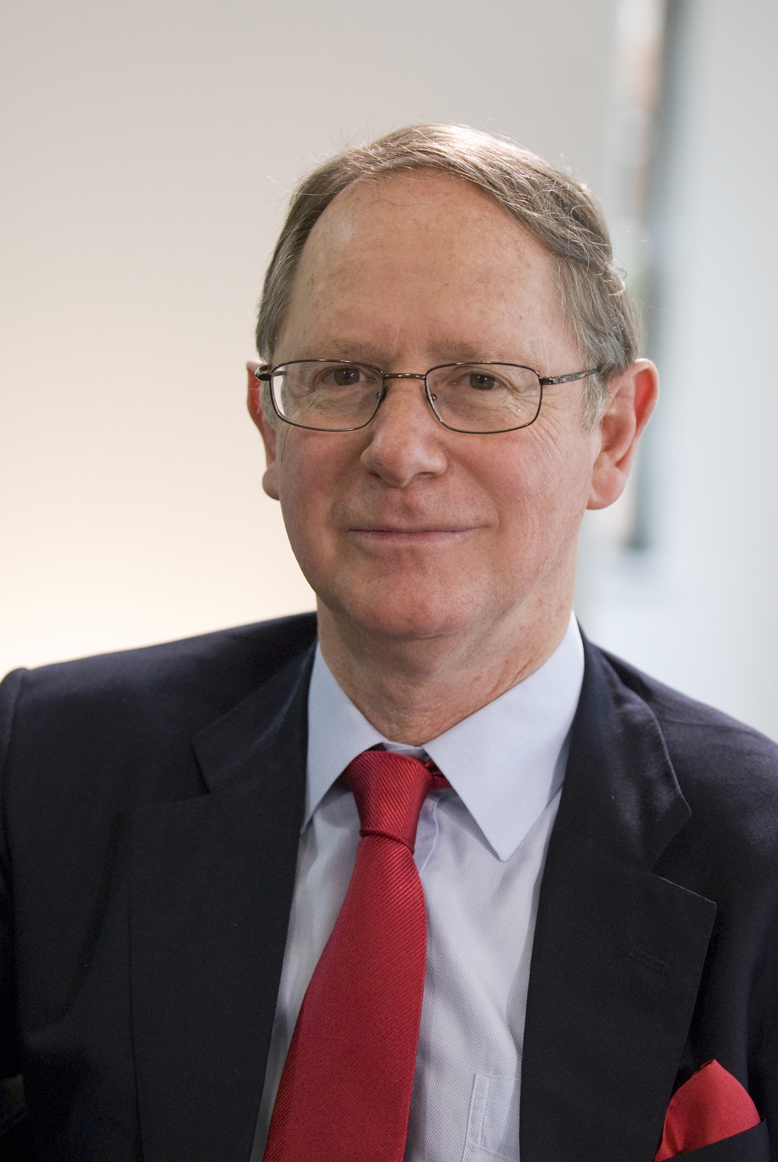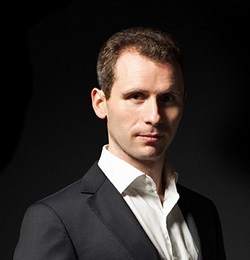Transcripts
 Erik: Joining me now is Josh Steiner, who heads up the Financials and Housing sector research department at Hedgeye Risk Management.
Erik: Joining me now is Josh Steiner, who heads up the Financials and Housing sector research department at Hedgeye Risk Management.
I always love interviewing the Hedgeye guys because they always come with really great slide decks. Josh is no exception this week. He’s put together a really excellent slide deck for us. It will be a challenge to get to all of the slides.
But I’m sure that you, our listeners, will enjoy every bit of it just the same. You can find the download link in your Research Roundup email. If you’re not yet registered for Research Roundup, just go to our home page at macrovoices.com and look for the red button that says Looking for the Downloads next to Josh’s picture.
Josh, last time that we had you for a housing update I think was when you spoke at our live even in Toronto last summer. Give us the update on US and Canadian housing, which is the same topic we’ve talked to you about before. Quite a bit has happened since then.
Let’s go ahead and dive into your slide deck.
 Erik: Joining me next is Santiago Capital founder, Brent Johnson. Brent is extremely well known for his dollar milkshake theory which, in my opinion, along with Jeff Snider’s dollar squeeze theory, is really one of the most insightful explanations of what’s been going on with the dollar index and the reason that we’ve seen so much strength in the dollar, even when interest rate differentials would seem to suggest otherwise.
Erik: Joining me next is Santiago Capital founder, Brent Johnson. Brent is extremely well known for his dollar milkshake theory which, in my opinion, along with Jeff Snider’s dollar squeeze theory, is really one of the most insightful explanations of what’s been going on with the dollar index and the reason that we’ve seen so much strength in the dollar, even when interest rate differentials would seem to suggest otherwise.
I want to refer our listeners, before we get into the interview with Brent, to a couple of previous episodes. We’ve had Brent on – not in his own feature interview; this will be Brent’s first feature interview today – we had him almost as a rebuttal to Luke Gromen’s last feature interview.
The link to that interview, including Luke Gromen’s very dollar bearish story along with Brent’s dollar bullish rebuttal, you can find that in your Research Roundup email or on our home page at macrovoices.com next to Brent’s picture. Also, Brent recently did an All Stars appearance for MacroVoices where we talked a little bit about the dollar.
Brent, I think that since we have not had you on the program as a feature interview guest before, I’d like to just do a quick recap of your Dollar Milkshake theory. What is this all about? And why is it that you think about the US dollar index a little differently than most analysts who tend to think that, really, the value of the dollar has everything to do with interest rate differentials. And a lot of analysts really don’t see some of the other aspects that you believe are driving the dollar.
 Erik: Joining me now on the program is Lakshman Achuthan, cofounder of the Economic Cycle Research Institute (ECRI). Lakshman prepared not just one slide deck but actually sent us four different slide decks, all of which are linked in your Research Roundup email. And we’ll be referring to some of those throughout this interview, so I encourage you to download them.
Erik: Joining me now on the program is Lakshman Achuthan, cofounder of the Economic Cycle Research Institute (ECRI). Lakshman prepared not just one slide deck but actually sent us four different slide decks, all of which are linked in your Research Roundup email. And we’ll be referring to some of those throughout this interview, so I encourage you to download them.
If you haven’t yet registered at MacroVoices for your free account to receive our Research Roundup email, you can just go to the home page at macrovoices.com and look for the red button that says Looking for the Downloads next to Lakshman’s picture on the home page.
Lak, thank you so much for joining us on the program. The reason I really have been looking forward to this particular interview is you are an analyst of cycles. You’ve been looking at business cycles and economic cycles for as long as anybody can remember.
We’re suddenly seeing this phenomenon where so many of our expert guests on this program are using the same phrase, late-cycle dynamics, saying that we’re very late in the current business cycle, get ready for it to end soon. And we’re looking for both confirmation or opposing views.
So, as a cycles guy, what do you think? Are there really justifications to say that we are late in the business cycle?
And, for that matter, what cycles are we talking about? Because some people talk about the business cycle, some people talk about the credit cycle. Are these the same thing or are they different things? And what should we be looking for?
 Erik: Joining me now is John Greenwood, Chief Economist at Invesco.
Erik: Joining me now is John Greenwood, Chief Economist at Invesco.
And, listeners, John put together a fantastic chart book for us with some really excellent graphs and charts. I strongly encourage you to download the chart book. You’ll find the download link in your Research Roundup email. If you’re not yet registered, just go to our home page at macrovoices.com and look for the red button that says Looking for the Downloads next to John’s picture on our home page.
John, thanks so much for joining us. You know, we’ve had so many guests tell us that we are at the end of the business cycle, late cycle. And one of the reasons that Patrick, my producer, sought you out is because you are obviously a very credible voice – but one who does not think that we’re necessarily at the end of the business cycle.
So please tell us, where are we in the business cycle? And what should we expect?
John: Well, my view is that, broadly, we are at mid-cycle, not late cycle. I know the cycle has been going on for ten years almost. In fact, in June will be the 10th anniversary of the trough of the last business cycle. So we’ve been expanding for 10 years. And in July this current business cycle expansion will become the longest in recorded US financial history.
But, nevertheless, I believe that it has several years to run. And, basically, I think there are three reasons for that.
First, money growth has been low and stable.
Second, private sector leverage in the US remains low, despite some concerns about the non-financial corporate sector.
And, thirdly, inflation is not a threat, nor do we face a major financial accident. Those are the two main causes why previous business cycles have come to a premature end.
In my view, if we take a historical analogy, we’re at something like 1995 in the cycle that went from 1991 to 2001, which was the previous longest expansion cycle. So I think we have several years to go because the central bank, the Fed, doesn’t have to take any drastic action at this point. And I don’t believe that there are serious problems in the private sector that will cause a premature end to the expansion.
 Erik: Joining me next on the program is Variant Perception’s managing director, Simon White. Simon’s got a fantastic slide deck for us, as Variant Perception always does. You can find the download link in your Research Roundup email. If you’re not registered yet, just go to our home page at MacroVoices.com and look for the red button that says Looking for the Downloads.
Erik: Joining me next on the program is Variant Perception’s managing director, Simon White. Simon’s got a fantastic slide deck for us, as Variant Perception always does. You can find the download link in your Research Roundup email. If you’re not registered yet, just go to our home page at MacroVoices.com and look for the red button that says Looking for the Downloads.
Simon, before we dive into the equity market, I know you guys at Variant Perception have a slightly different way of approaching markets. So let’s start by doing just a quick summary of the process that you use at Variant Perception to approach and analyze markets.
Simon: Thanks, Erik. And thanks for having me on the show again. So, as you say, I think what we’re trying to emphasize is it’s not so much what you think it’s how you think is very important. The slide deck you mentioned, there’s a very quick diagram there that I think really covers it.
We really try to focus on leading economic indicators because they tell us where things are going, not where things have been. And we use these to forecast turning points. And through these turning points, we basically look at markets.
But we look at markets through the prism of valuation, sentiment, and momentum. And then we try and look at the biggest mispricings to try and find the best trade ideas. So that’s the really succinct version. The aim is to really come up with actionable ideas and using leading economic data to try and find those ideas.
MACRO VOICES is presented for informational and entertainment purposes only. The information presented in MACRO VOICES should NOT be construed as investment advice. Always consult a licensed investment professional before making important investment decisions. The opinions expressed on MACRO VOICES are those of the participants. MACRO VOICES, its producers, and hosts Erik Townsend and Patrick Ceresna shall NOT be liable for losses resulting from investment decisions based on information or viewpoints presented on MACRO VOICES.
